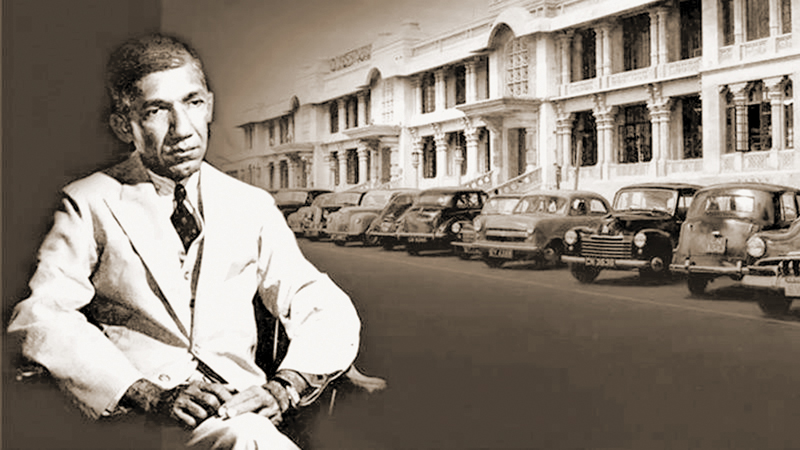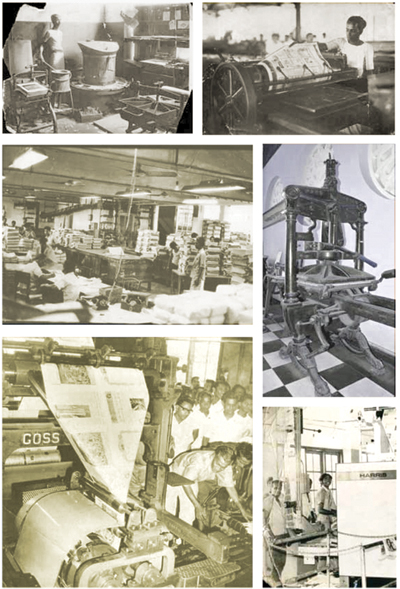D. R. Wijewardene : Legendary pioneer of trailblazing newspapers

Only a few people have influenced the course of Sri Lanka’s pre and post-Independence history in the manner that D.R. Wijewardene, founder of the Associated Newspapers of Ceylon Limited (ANCL), has done. As we commemorate the 138th Birth Anniversary of this noble son of Sri Lanka, it is time to re-appraise his yeoman service to the nation.
Wijewardene, founder of the ANCL, will always be known as the doyen of the newspaper industry in Sri Lanka. Born on February 23, 1886, Don Richard Wijewardene was the third son of a family of nine. He received his early education at S. Thomas’ College, Mount Lavinia and later entered the Cambridge University in England.
D. R. at the prime of his youth enjoyed the privilege of acquiring higher education in Britain. At Cambridge University, Wijewardene had the rare opportunity of meeting the future leaders of India like Lala Lajpat Rai, Bepin Chandra Pal, Surendranath Banerji and Gopal Krishna Gokhale, a member of the Imperial Legislative Council.
Of these meetings during his student days, he wrote: “My interest in politics began during my undergraduate days at Cambridge. There were kindred spirits from India, Ceylon and other parts of the East”.
Deep commitment
 Impressed by the thoughts, words and deeds of the contemporary Indian visitors to Cambridge that every educated young Indian or Sri Lankan had a historic role to play in the public life and the Independence struggle of his or her country, Wijewardene was fired with a deep commitment to make the monumental sacrifice he was destined to do on his return home after studies.
Impressed by the thoughts, words and deeds of the contemporary Indian visitors to Cambridge that every educated young Indian or Sri Lankan had a historic role to play in the public life and the Independence struggle of his or her country, Wijewardene was fired with a deep commitment to make the monumental sacrifice he was destined to do on his return home after studies.
Wijewardene was very much in touch with local events despite the communications difficulties that existed back then and organised the first deputation to the Secretary of State for the colonies with H. J. C. Pereira. Among the others of the group was E. W. Perera of the Lion flag fame.
Wijewardene had a good friend, a Sri Lanka born Englishman by the name of F. H. M. Corbet, who was a practising barrister in England. “It was in his Chambers that I first met E. W. Perera who was even then a keen politician and displayed many of the qualities which gave him a leading position in the Legislature many years later”, Wijewardene recalled. His actions in England paved the way for the birth of the Temperance Movement or the Amadyapa Sabha to fight against the evil of alcohol, which the British had popularised through Sri Lanka through licensed taverns.
Wijewardene, hailing from an affluent family, could have looked the other way and pursued his business interests while the people suffered under the yoke of colonialism. But he did not. He wanted to be in the vanguard of the freedom movement.
While in England, he had already decided to start a newspaper back home to fight for the cause of regaining freedom. By the time he arrived he was fully equipped mentally with the techniques of the trade. Indeed, in newspapers, he found the perfect medium to carry forward the freedom struggle. Due to his Buddhist upbringing, he firmly believed in non-violence.
Sir Ivor Jennings, an Irish Christian, the first vice-chancellor of the Peradeniya University of Sri Lanka (which, incidentally, was built on a proposal by Wijewardene) commented that, “As a Buddhist he (Wijewardene) could not advocate or allow his newspapers to advocate methods of violence…”
Embarking on anti-colonial journay
A patriot to his fingertips, Wijewardene found the right opening for anti-colonial mission by purchasing the Sinhala publication “Dinamina” started by legendary editor H.S. Perera. Overnight, the “Dinamina” rose up in popularity reaching remote areas of the country. Although the paper had no front page pictures and sensational stories, people everywhere welcomed it.
Wijewardene who learnt that E. W. Perera was responsible for obtaining the Lion flag, ordered a copy drawn exactly in the same colour scheme and despatched so that he could reproduce the flag in his paper the “Dinamina”. The “Dinamina” printed in natural colours the Lion flag of Lanka.
D. C. Wijewardene in his book “Revolt in the Temple’ states: “The Dinamina edition created quite a stir in the island. The newspaper office which at that time was at Norris Road (present Olcott Mawatha, Pitakotuva) Colombo, was stormed by crowds clamouring for copies of the paper which by noon was changing hands at five rupees a copy [then a substantial sum], and telegrams began to pour in from the outstations requesting more copies, but the edition had been exhausted within a few hours of the issue. Vast crowds gathered on the road opposite the newspaper office and police had to be called in to control them.”
That was the first occasion when our people saw for the first time the National Flag after it was removed by the British and deposited in the Chelsea hospital in London in 1815.
Beginning of a newspaper empire
Just four years after starting the Dinamina, he bought the “Ceylonese” and renamed it as the “Ceylon Daily News”, now the biggest selling English newspaper in the country. When he started the “Ceylon Daily News” he not only established a newspaper business, he also laid the foundation for a flourishing newspaper empire where within a short time.
In fact, the Ceylon Daily News became such an ingrained part of people’s lives that many old timers still call it CDN, long after the newspaper shed the ‘Ceylon’ tag. It became one of the most influential voices in the local political scene, shaping opinions and creating debate and it remains so, just two years away from its centenary. He then purchased the “Observer”, which was already 90 years old. The Sinhala weekly “Silumina” was started in 1930 and the “Thinakaran” in Tamil followed a couple of years later, making ANCL the first trilingual publishing house in the island.
The ANCL was formally established in 1926 and all operations were shifted to the purpose-built “Lake House” building by the banks of the Beira Lake in the heart of Colombo in 1929.
Anyone entering the Lake House building would be thoroughly amazed to witness the skilful planning and the deft designing of the entire construction and the interior lay out. There are historical motifs in many parts of the building. It is now listed as a Heritage Building.
The company, the biggest newspaper publisher in Sri Lanka, operates from this historic landmark building to this day and the name “Lake House” is now synonymous with ANCL. Wijewardene, with his hand-picked team of erudite editors and journalists who shared his noble vision and mission, was in the forefront of the island’s independence struggle through his array of newspapers in all three languages.
He saw his dream being fulfilled in 1948, but unfortunately passed away just two years later on June 13, 1950, leaving a lasting legacy that will forever be etched in the minds of all Sri Lankans and in the annals of journalism in Sri Lanka. Though Wijewardene maintained a low key profile throughout his life, his name became a household word with the ever growing, readership of Lake House papers.
Wijewardene revolutionised the newspaper industry and journalism in Sri Lanka with his fearless commitment to exposing the truth through ANCL newspapers. As one of his biographers, the one-time editor of the Daily News H.A.J. Hulugalle wrote, “before he was fifty, D. R. Wijewardene had established several flourishing newspapers, built up a great business and influenced the course of the island’s history. Perseverance, courage and a high sense of public duty were the main elements of his success.”
He was a perfectionist and a trailblazer. The Lake House edifice, instantly recognised by people across the island, is a proud monument to his lasting legacy. He also installed the latest printing technology available at that time and assured a good working environment for his editors, journalists and other employees.
Wijewardene also understood the power of the visual medium and established a studio called ChitraFoto at Lake House premises where some Sri Lanka’s foremost photographers honed their skills.
Future of printing industry
Indeed, men of his calibre are few and far between. While the newspaper industry has changed drastically since the 1950s, the ideals he cherished in the field of journalism still hold true. However, not all journalists and media outlets play by these rules. Today, print media outlets are facing stiff competition from electronic media and social media – there was no television here during Wijewardene’s time.
Newspapers have also embraced the Internet even as they compete with dedicated news websites and citizen journalism websites. Incidentally, the Daily News and the Sunday Observer were the first to launch Internet editions in 1994. People are now bombarded with news 24/7, on their mobiles, on television, radio and the Net.
Truth and accuracy often become casualties of this ‘race to be first’ and even national interests are sometimes disregarded. Despite these developments, reports of the death of the newspaper are greatly exaggerated. Newspapers still have a story to tell – one that is more analytical, more in-depth and more trustworthy than the sound bites and video clips of the Internet age. All journalists still have to be guided by the principles that Wijewardene believed in – being bold, truthful and objective – in this noble mission.


